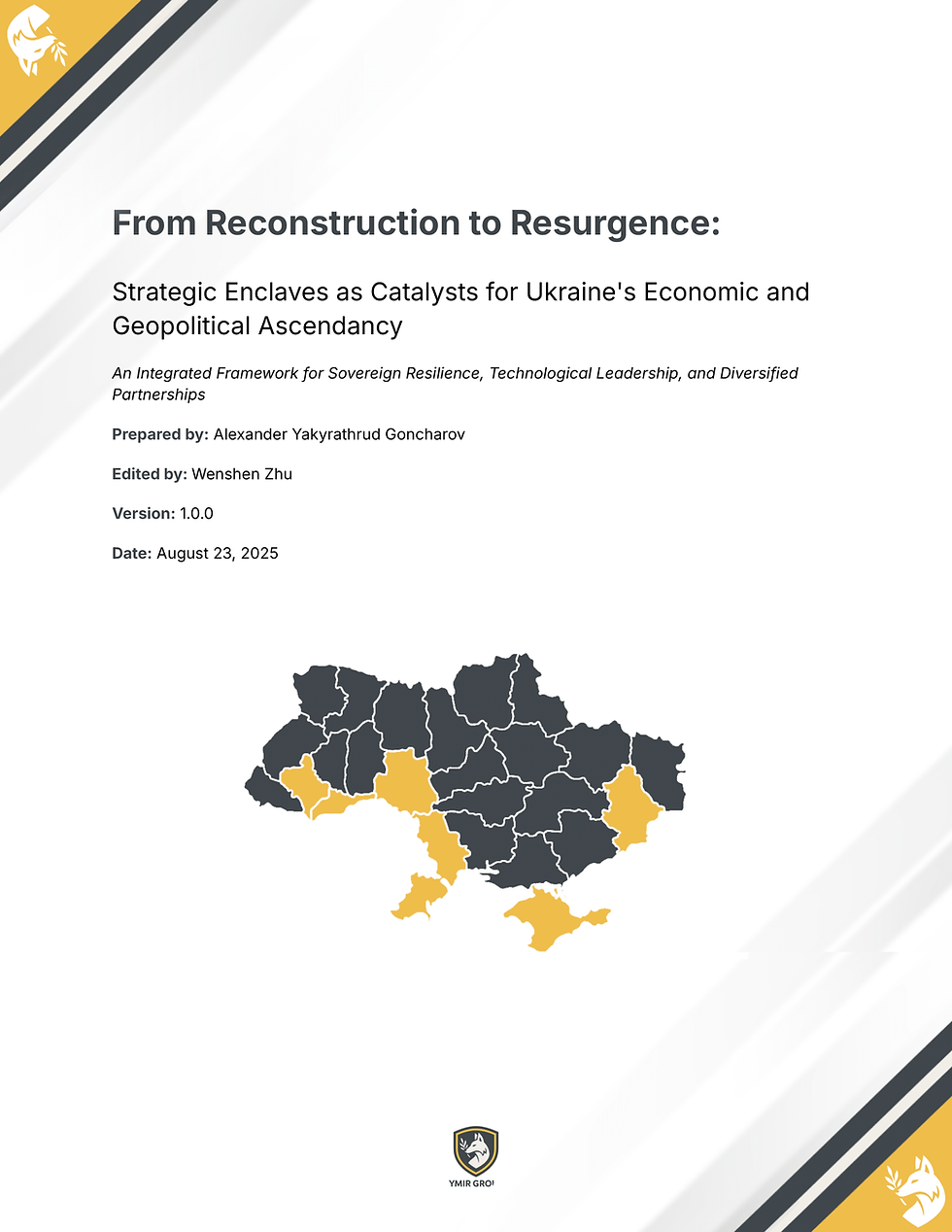Executive Summary: From Reconstruction to Resurgence
- Alex Goncharov
- Jul 3
- 2 min read
Updated: Sep 23

Core Thesis
Ukraine’s recovery cannot rely on conventional donor-driven reconstruction, which has historically proven slow, fragmented, and corruption-prone. Instead, economic revival and security resilience must be co-engineered. SOZs (Strategic Output Zones) and SEEs (Special Economic Enclaves) are designed to simultaneously attract frontier industries, embed sovereign security guarantees, and safeguard capital against geopolitical volatility.
Key Features of the Framework
Dual-Zone Architecture:
SOZs operate above ground with long-term tax and regulatory exemptions, accelerating high-tech sectors such as drone systems, aerospace, semiconductors, and AI.
SEEs integrate subterranean salt mine facilities for EMP-resistant, strike-resilient semiconductor and data infrastructure, offering unmatched continuity and security.
Governance Innovation:
The Economic Enclave Authority Board (EEAB) embeds private-sector actors in policymaking under state legal oversight, ensuring alignment of industrial growth with national interest.
A dedicated Economic Enclave Security Force (EESF), funded internally, safeguards neutrality, infrastructure, and supply chains while operating under strict anti-corruption rules.
Strategic Incentives:
Companies enjoy long-term autonomy and protection in exchange for guaranteed sovereign supply quotas.
A “Bounties” system incentivizes innovation in dual-use technologies through structured state-backed rewards, ensuring that R&D outcomes advance national resilience.
Geopolitical Role:
Enclaves function as economic buffer zones, insulating assets during wartime and protecting critical trade corridors.
Ukraine gains leverage in global supply chains while reducing dependency on traditional Western donor frameworks.
Broader Implications
The SOZ/SEE model advances more than reconstruction:
It accelerates industrial recovery while embedding self-financing mechanisms.
It mitigates brain drain through targeted STEM pipelines and international talent partnerships.
It supports regional integration by enabling Ukraine to anchor new alliances with Eastern European states through non-traditional, economically grounded partnerships.
It sets a precedent in international law, introducing wartime economic neutrality and extraterritorial immunity for enclave assets.
Open Invitation
This draft represents the culmination of months of structured inquiry into the intersection of economic recovery, security resilience, and institutional innovation for Ukraine’s post-war future. While the framework outlined here is ambitious, it is also deliberately unfinished: the document remains in its final drafting stage, requiring further editing and the strengthening of its supporting appendix before peer review.
For this reason, we extend an open invitation to researchers, policy practitioners, and institutions who share an interest in Ukraine’s recovery and Eastern Europe’s broader strategic trajectory. Your expertise, critique, and partnership can refine and reinforce the proposal presented here, ensuring that it is both empirically grounded and practically actionable.

